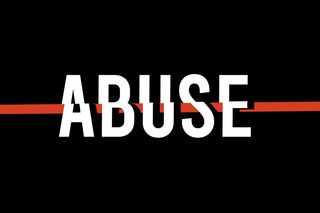
We’ve Overused the Word ‘Abuse.’ Here’s Why It’s Hurting the Fight For Gender Equality.
We can replace the word with more nuanced, accurate, and sensitive descriptions of harm that further normalize a person’s right to be upset over that harm.

We’ve overused the word ‘abuse.’ It litters our retelling of events to an almost pathological degree — a strong, unwelcome rebuttal of a person’s argument online is now abuse, a catcall is also abuse, even a sudden, hurtful breakup is sometimes deemed as abuse. But just because something is hurtful, or harmful, does not make it abusive. So, why are the semantics important here?
The next step after labeling singular actions as ‘abuse’ is characterizing the person behind them as the ‘abuser.’ Pegging everyone as an abuser then prevents us from reckoning with the context around singular incidents and, worse, holds us back from understanding and trying to fix underlying systemic causes.
Although the word ‘abuse’ is heavily-laden with negative, unforgivable connotations, we overuse it because we don’t currently have the vocabulary to identify varying degrees of harm. We don’t have a framework to address the grievances that stem out of a bad date, for example, or from an uncomfortable workplace conversation, or online trolling. We don’t have an institutional framework to handle situations in which one person was harmed but the other didn’t intend it, in which there’s nobody to blame and no ‘justice’ to be had. We live in a legally and socially retributive society, in which people are more concerned with punishment than healing, in which we need words like ‘abuse’ plastered on all harmful actions in order for us to take them seriously.
Let’s take the Aziz Ansari as an example — one of the most well-known cases in the past few years that highlighted a societal need for us to categorize harm better. It’s the story of Grace, published by Babe.net, in which she delineates her experience of feeling coerced by Ansari into performing sexual acts. The story is littered with grey areas: she gave non-verbal cues for Ansari to stop but he says they didn’t register with him; she didn’t get up and leave, which he took to mean the encounter was consensual. By virtue of these grey areas, a polarized rift appeared on social media after the story first dropped — was Ansari to blame for his predatory coercion, or was his obtuseness and obliviousness the real problem?
Too many agreed with the latter, wanting to give Ansari the benefit of the doubt for something that happens all too often. In a knee-jerk reaction to such instantaneous forgiveness and consideration, feminist activists, fueled by righteous indignation at the ubiquity of such encounters, categorized it as sexual abuse, simply to impress the gravity of the situation on others.
Related on The Swaddle:
Shame, Family Secrecy Lead to Mishandling of Child Sexual Abuse
But, as with anything that gets instantaneously polarized on social media, it was more complicated than that. Just because what Ansari did (or didn’t do) was harmful to Grace, doesn’t make it abuse. Misidentifying it as such damaged the conversations we should have instead been having at the time. What exactly led to two people having wildly different retellings of an intimate encounter that they were both a part of? What we should have talked about was why so many men have had similar sexual experiences, in which a bit of coercion was natural. What we should have talked about was why women don’t feel comfortable getting up and walking out when they feel uncomfortable. Instead, by throwing around the word ‘abuse’ in discussing the scenario, the conversation shifted to how bad or not bad Ansari’s actions were — which is a question that was impossible to answer then and is still impossible to answer now.
By throwing around the word ‘abuse,’ without reckoning with the individual complexities of a case, we write off the behavior as a blanket bad, unforgivable, patterned behavior, most often without any proof. It shifts the conversation from understanding why someone did what they did and assessing its harm, to what kind of a person they are, which, when trying to dismantle systemic, gender-based discrimination and harassment, is a fruitless endeavor. It’s almost as if calling something ‘abuse’ absolves us from understanding why it happened and what effect it had on the person. It, unknowingly and couched in righteousness, becomes the easy way out.
So, what indeed is abuse? It is an ongoing, continuous pattern of harm that hurts people emotionally, physically, or sexually. Abuse is categorized by its frequency, its repetitiveness, and the intent of the abuser. Abuse is a way of establishing power over another person, with no intention of letting up. This can take the form of a domineering or gaslighting partner or a violent parent. This continuous pattern of harm isn’t the same as accidentally hurting someone, or raising your voice at someone momentarily at the end of a stressful day. In that way, all abuse is harmful, but not all harm can be categorized as abuse.
This is not to shame people for using the word ‘abuse’ — as so often happens to women who speak out about their trauma, and often don’t have the words to convey the breadth of harm it did to them. This is to urge people to reckon with why we feel the need to overuse the word and apply it to situations we don’t really understand. It’s to make people reckon with the messy complexities of harmful situations, and perhaps think about what a non-knee jerk reaction to those could look like.
So, what’s the solution here? First, not to require our stories of discomfort, harassment, and harm to reach an extreme to be valid, heard, or handled. This includes not asking women to suck it up when they voice their experiences, not requiring them to demonstrate in detail why and how they were harmed to appeal to others’ conscience. It includes becoming more sensitive in legal institutions, workplaces, and schools to address and remedy varying degrees of harm, not just those that feel overwhelming, the most harmful or severe. Only then can we start identifying and coming up with recourses for the breadth of harm an action can do, ultimately taking us one step closer to not having to use ‘abuse’ as an (inaccurate) placeholder for all actions.
This can help trigger a more open, accepting society that empowers women to speak up about the harm done to them, eventually helping to unlearn conditioning that leads women to deny their own trauma and contribute to a culture of silence. This is not to say things will immediately improve simply because we stop using the word ‘abuse.’ The point is to be able to replace the word with more nuanced, accurate, and sensitive descriptions of harm that further normalize a person’s right to be upset over them. Overusing the word ‘abuse’ is merely a symptom of the current way in which we devalue and dismiss the voices of those in society that are prone to the most frequent forms of harm. Its overuse signals we aren’t anywhere close to assessing just how pervasive and commonplace these stories of harm are, and quite far away from developing frameworks that can help us do something about them.
Rajvi Desai is The Swaddle's Culture Editor. After graduating from NYU as a Journalism and Politics major, she covered breaking news and politics in New York City, and dabbled in design and entertainment journalism. Back in the homeland, she's interested in tackling beauty, sports, politics and human rights in her gender-focused writing, while also co-managing The Swaddle Team's podcast, Respectfully Disagree.
Related


Japanese City Yamato Has Banned ‘Smartphone Walking’
